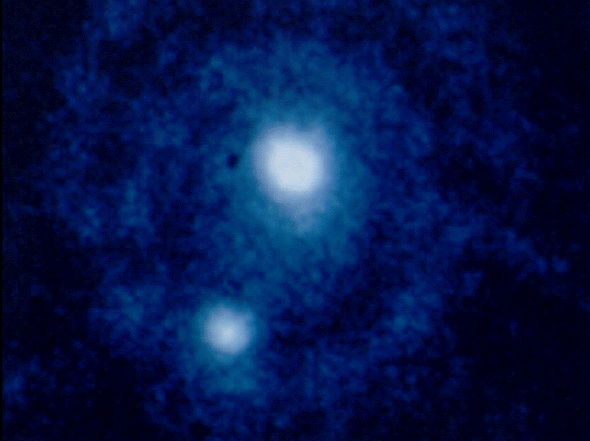

Pluto
This view of Pluto was taken by the Hubble Space Telescope. It shows a rare image of tiny Pluto with its moon Charon, which is slightly smaller than the planet. Because Pluto has not yet been visited by any spacecraft, it remains a mysterious planet. Due to its great distance from the sun, Pluto's surface is believed to reach temperatures as low as -240°C (-400°F). From Pluto's surface, the Sun appears as only a very bright star.
Although Pluto was discovered in 1930, limited information on the distant planet delayed a realistic understanding of its characteristics. Today Pluto remains the only planet that has not been visited by a spacecraft, yet an increasing amount of information is unfolding about this peculiar planet. The uniqueness of Pluto's orbit, rotational relationship with its satellite, spin axis, and light variations all give the planet a certain appeal.
Pluto is usually farther from the Sun than any of the nine planets; however, due to the eccentricity of its orbit, it is closer than Neptune for 20 years out of its 249 year orbit. Pluto crossed Neptune's orbit January 21, 1979, made its closest approach September 5, 1989, and will remain within the orbit of Neptune until February 11, 1999. This will not occur again until September 2226.
From www.solarviews.com
Back to Home